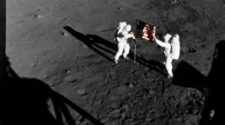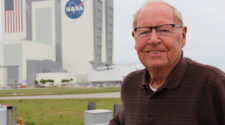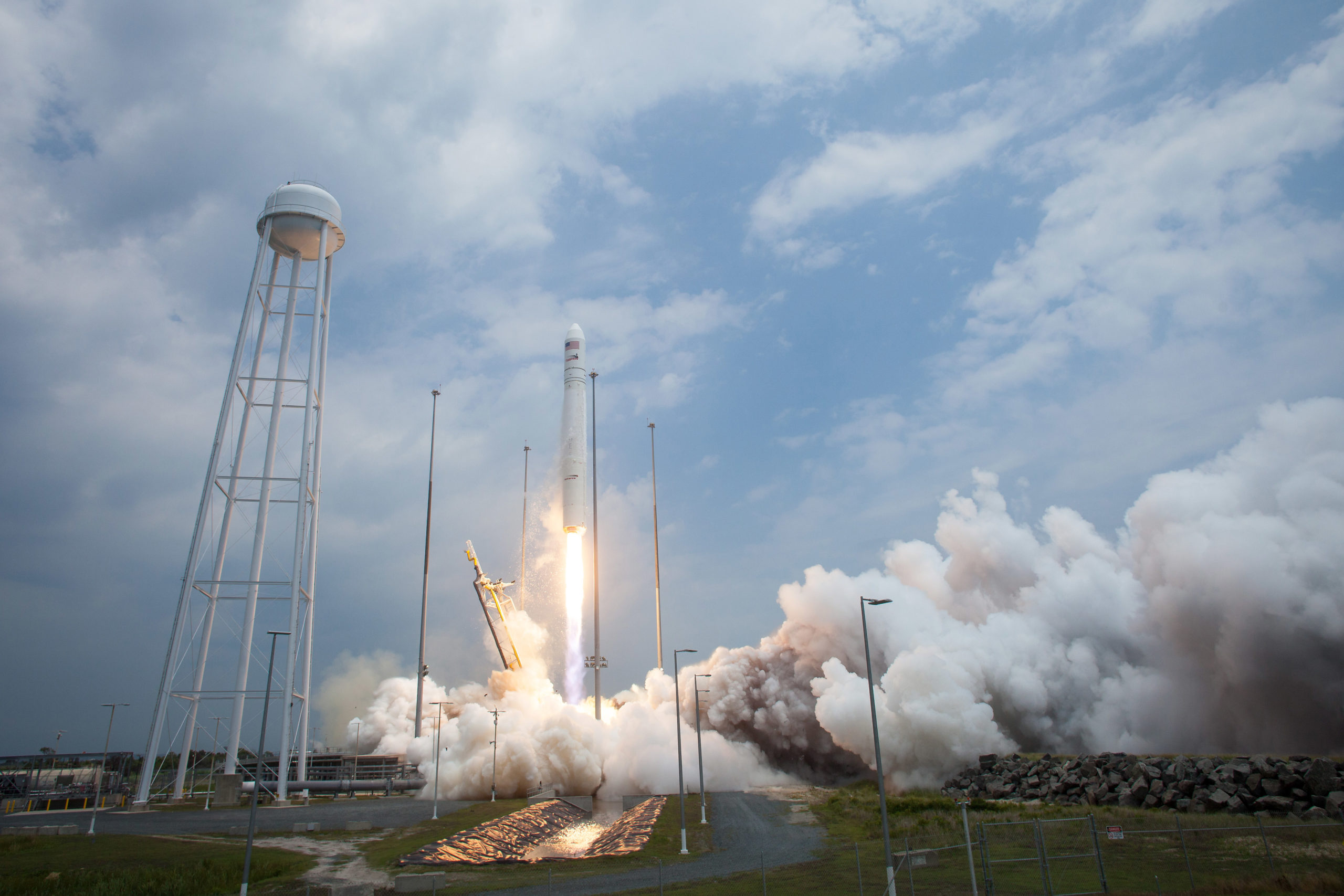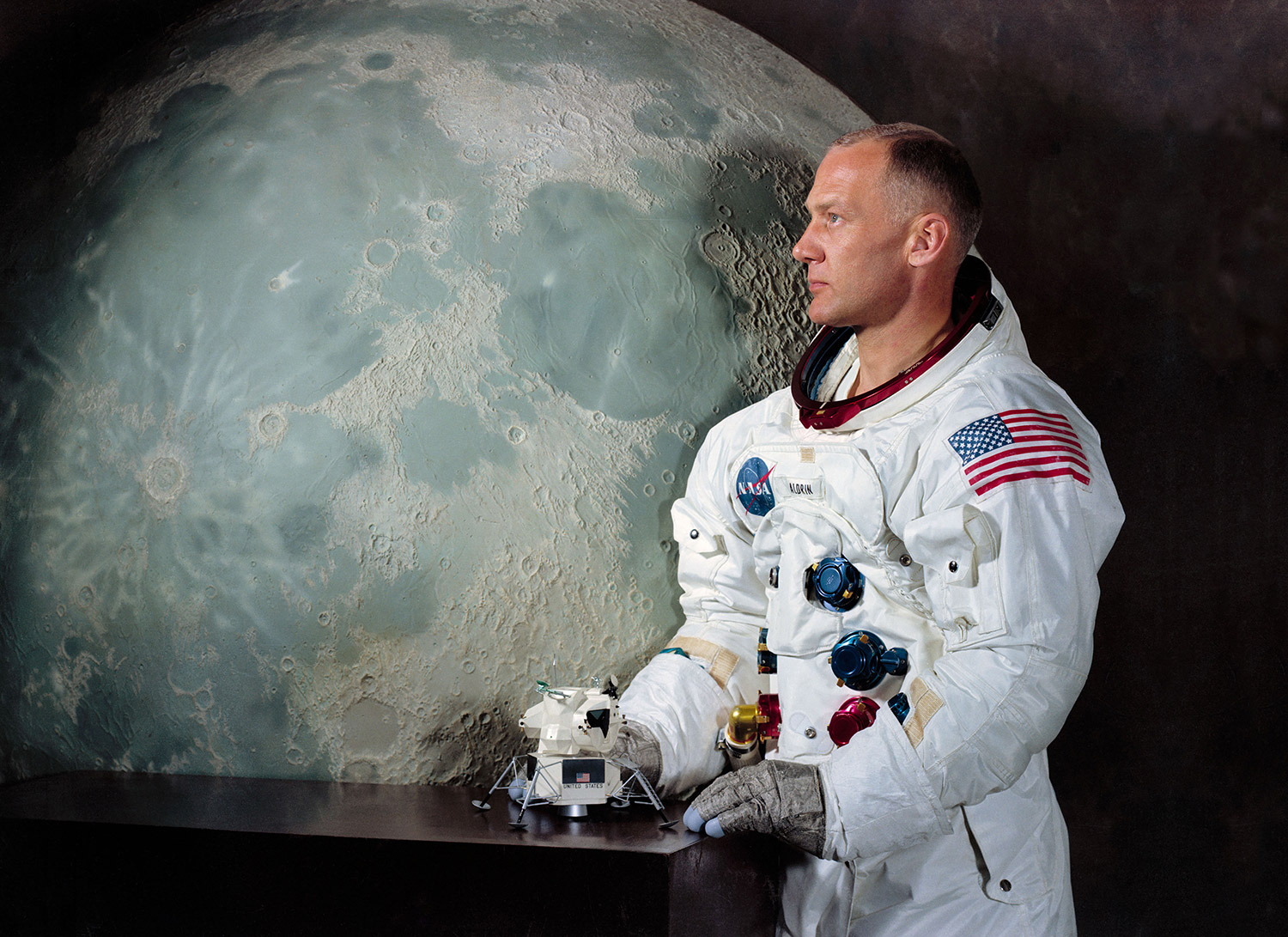
At 84 years of age, Apollo 11’s Buzz Aldrin still has a lot to say. And with a lifetime of experiences behind him – and ahead of him yet as well – he’s hoping those in power in Washington D.C. and at NASA will listen to his plans to colonize the planet Mars during the next four decades.
July 20th, 2014 marks 45 years since Aldrin, Neil Armstrong and Michael Collins ventured to the Moon during the Apollo 11 mission. While Collins stayed in orbit aboard the Columbia module, Armstrong and Aldrin made history by taking the Eagle module down to the surface and creating mankind’s first footprints on another celestial body.
Forever known as ‘the second man to walk on the Moon,’ Aldrin has been the more outspoken of the trio in the decades since. While Armstrong advocated for going back to the Moon, believing that there was much left to learn from the Earth’s nearby satellite, Aldrin has been a strong proponent of extending mankind’s grasp by aiming instead for the Red Planet.
Despite a busy speaking schedule as the 45th anniversary nears, Aldrin was gracious enough to spend nearly an hour and a half speaking with RocketSTEM over the phone from his Los Angeles office. The topics were varied and the shared knowledge was immense, but this reporter did his best to absorb all that Aldrin had to say.
Becoming an astronaut did not always seem to be in the cards for Aldrin, who holds degrees from West Point (B.S. in Mechanical Engineering) and MIT (Doctorate of Science in Astronautics). Aldrin flew F86 Sabre jets for the U.S. Air Force during the Korean War and was decorated after shooting down two Mig-15s. But it was a decision he made after the war that he thought might have closed the door on him becoming an astronaut.
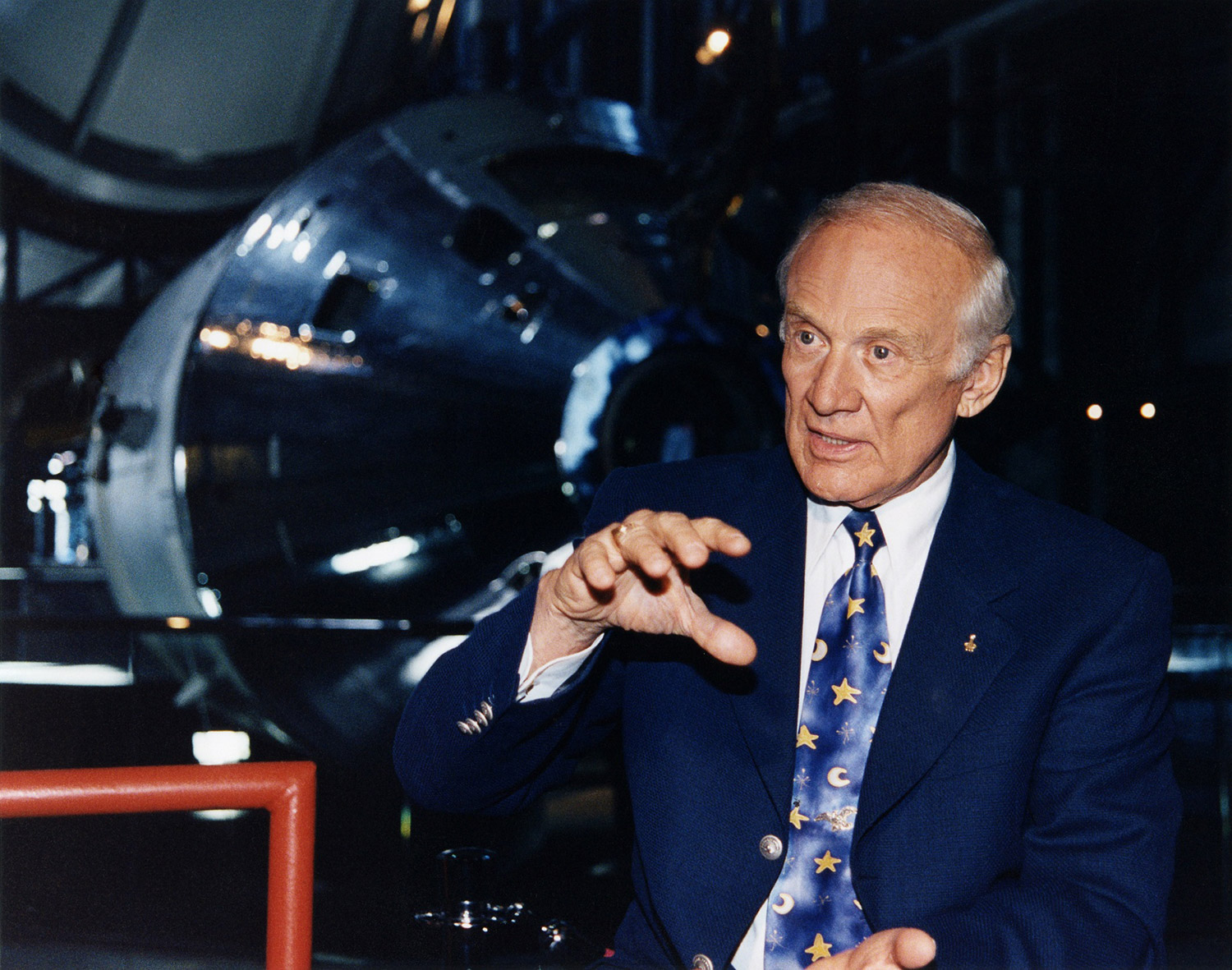
Awareness of the possibility of space exploration “really originated for the ordinary citizen in 1957 with Sputnik. Now we just assume that the Russians did Sputnik because the Russians did Sputnik. But why? Why didn’t the United States do that? There probably were reasons, but I was pretty busy when ‘beep, beep, beep, beep’ went overhead as I was in Germany on five minute alert with nuclear weapons on my aircraft. So that was not foremost in my mind.”
“I discovered a couple of years later in Time magazine that the human beings who would be carrying out America’s human space program had to have attended test pilot training. I had not chosen to do that and was about to embark on a significant academic program so that it probably would not have made sense to follow back with test pilot training. That essentially wrote off that profession, but that didn’t mean that I didn’t have an interest and that I didn’t see the parallel between being a fighter pilot and getting on an ideal intercept and rendezvous in space.
“My education was paid for by the Air Force Institute of Technology in Dayton, Ohio, which emanated out of an Air Corps engineering school where my father was the commandant between 1920 and 1925. The school of aviation technology that my father was the beginnings of as a result of his MIT doctoral work, became the institution that sponsored and paid for my doctor of science at the same place, MIT, which launched me on a space career as Dr. Rendezvous.”
Aldrin was selected by NASA in 1963 to become part of the third group of astronauts. He was the first astronaut to hold a doctorate, an education which would become important to future of manned spaceflight. The docking and rendezvous techniques he devised for orbiting spacecraft were among the keys to the success of the Gemini and Apollo programs. Those same techniques are still used by spacecraft to this date.
“As crew assignments came out for the progressive Gemini program, it looked as though I would not fly. I was scheduled to be on the backup crew of Gemini X and the crews were already assigned and in training for XI and XII. The backup crew on X would be the prime crew on XIII, but there wasn’t a XIII. But things happened, and obviously continued to happen, from the time I crawled out of my crib and got in trouble for getting into the refrigerator.”
During the tenth and final manned Gemini flight, Aldrin would fly as the pilot alongside Commnand Pilot Jim Lovell who was on his second spaceflight. The main objective was to demonstrate that an astronaut could successfully conduct a spacewalk. A task which had proven to be problematic to both the American astronauts and Russian cosmonauts in prior missions.
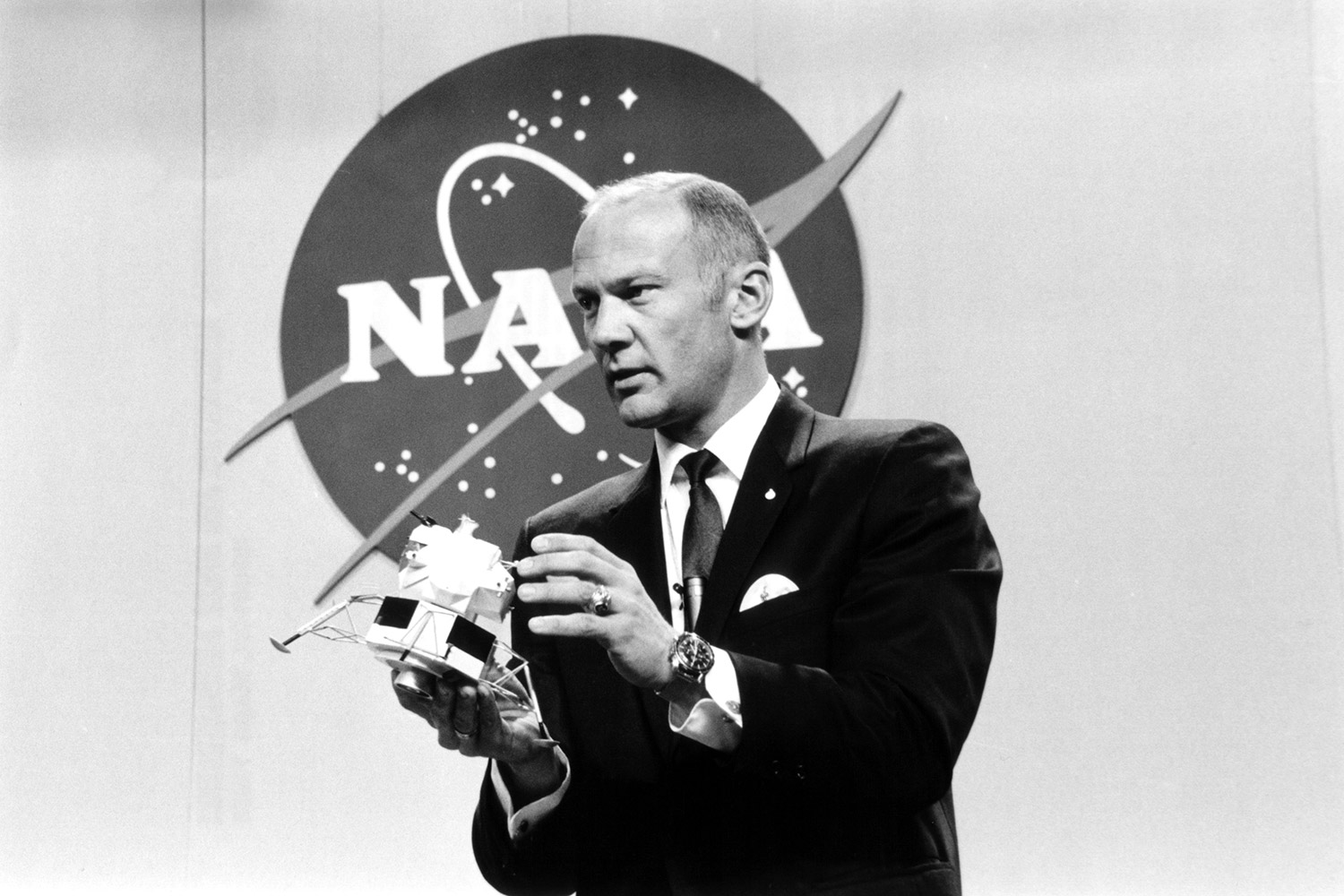
Aldrin had trained for the mission using what was then a novel technique of practicing his spacewalk underwater first on Earth. The training proved to be so successful that it has been a staple of astronaut training ever since. During the mission itself, Aldrin performed a two-hour 20-minute spacewalk while tethered and was able to perform a number of extravehicular activities.
“My education plus my Air Force fighter pilot experience contributed directly to my MIT thesis on manned orbital rendezvous. Now what’s a spacecraft got to do with a fighter? Well, it’s actually quite similar when you look at the final intercept of a space rendezvous that has been set up by selected maneuvers to reach the correct point, at the correct time, with the correct velocity. So an intercept can then be made that is quite standard and familiar and useful in an optimum backup fashion.
“Following the Moon landing, I eventually applied that orbital mechanics to flybys of the frontside and the backside of the Moon. Since NASA did not have a full appreciation of that then, I switched to Mars. It’s kind of hard to discover something that’s there, you just haven’t found it yet, but in a pioneering discovery I found that there is a cycling orbit between Earth and Mars that continually rotates back and forth with the only interval of Mars access, or departing Mars, which is every 26 months. That has now been improved by my inspiration and work with Purdue University to a dual synodic period cycling spacecraft, which for simplicity is every other 26 months. Therefore it requires two of these cycling spacecraft to transport humans from the vicinity of the Earth to a Mars landing in about five months. Hopefully that will be the standard international way of transporting crews from the Earth to Mars.
“It makes possible the dream of regular flights to the Red Planet and a permanent human presence there.
“I’m keeping very current on all the changes that might have an affect on phasing this system in so that potentially the next president in July of 2019 -– on the 50th anniversary – could make some statement that I believe that within two decades the United States can lead an international human permanence on the planet Mars. Which the more i think about it will be a giant leap of mankind to be remembered for hundreds and thousands of years.”
Aldrin admires the work toward launching humans to Mars being done by Elon Musk and SpaceX, as well as the recent successful test of NASA’s Low Density Supersonic Decelerator technology in this skies above Hawaii.
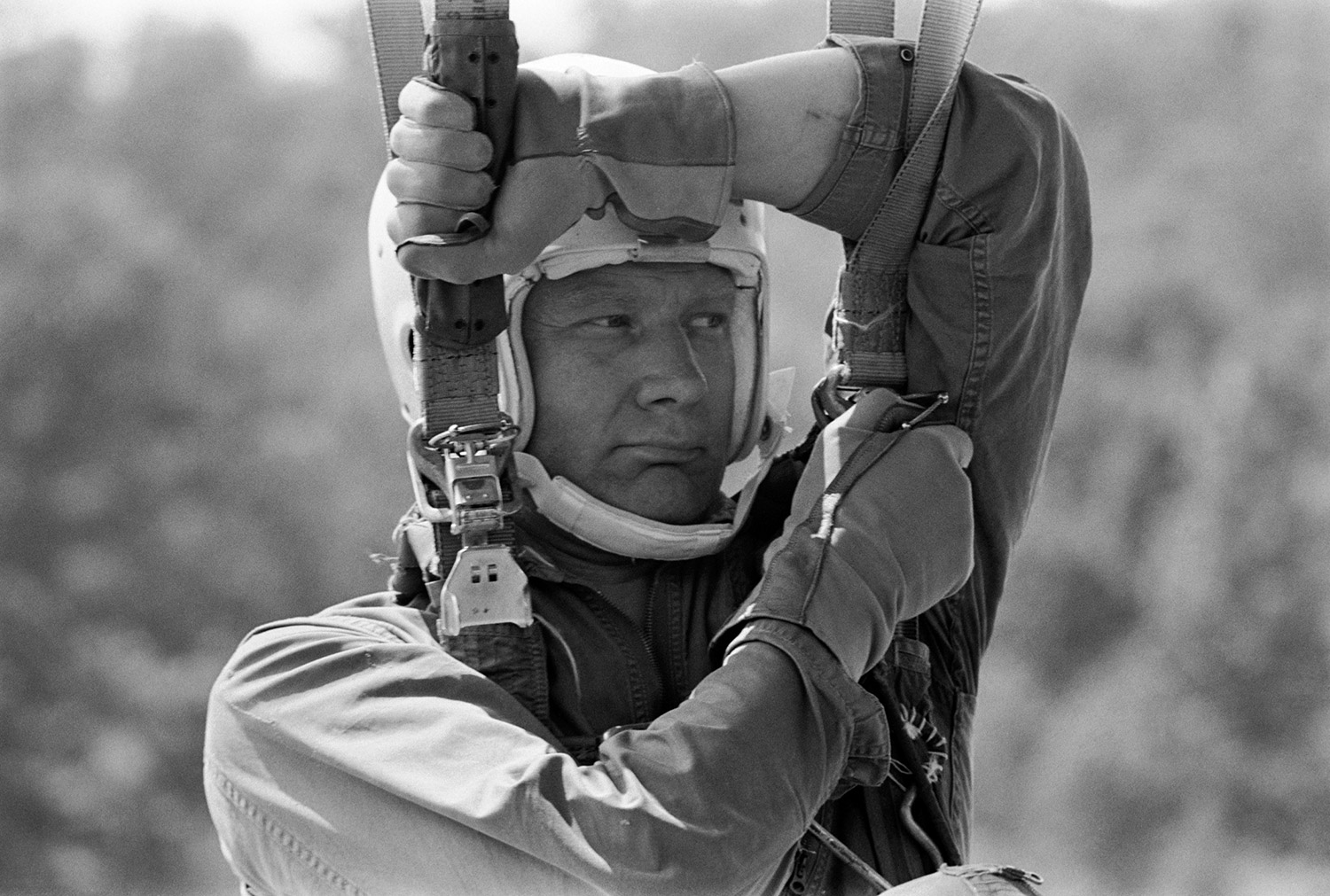
“Not only his organization, but I could say Elon himself, has been financially successful as a car designer of excellence and as a rocket developer with spacecraft follow-ons that appear to be potentially very pioneering at this time. But after Curiosity from JPL endured seven minutes of terror – or suspense or whatever you might call it – it dawned on people that to land on Mars in a way similar to how we land on Earth from space would require considerable attention be paid to the thinner atmosphere at Mars. To land like on Earth would require a much larger heat shield called an adjustable or an expandable ablator, a quite large parachute, plus a final descent rocket to land.
“If the entry for landing at Mars can be perhaps a bit more like our descent to land on the Moon, rather than an entry into the thick atmosphere of Earth, if that proves to be true, then it will result in what some might call a game changer. We may or may not have to go down both paths before making a choice for both cargo and crew.
“I’m encouraging NASA to look at an exploration sequence, and I find it convenient to limit that to 2020 to 2040 because I think we somewhat understand the limited things that are being scheduled between now and 2020. Of course one has to include what will be available in 2020 but I just don’t have enough graph paper to go all the way back another six years.”
Aldrin plan includes spending the ensuing decade developing a complete way of launching things from the U.S. and staging out toward the Red Planet in stages. Human and robotic exploration missions could begin in low Earth orbit, then move to Moon, or to asteroid distances beyond the Moon, and eventually settle on the Martian moons, Phobos and Deimos, where real-time exploration of the Martian surface could be controlled by humans in orbit or on the surface of the moons.
“I’ve always had the concept in the back of my mind that we would occupy maybe both of the moons of Mars. If you’re in orbit around Mars at a moon or otherwise, what that means is you can control two rovers on opposite sides of Mars. Steve Squyres (former principal investigator of the Mars Exploration Rover’ program) who’s now the head of NASA Advisory Council, he said what they did in five years on Mars (with the Spirit and Opportunity rovers) could’ve been done in one week if we had a human being in orbit around Mars giving instructions directly with less than a second time delay to the rovers on the surface.
“What I would add to that understanding is that if we are in orbit around Mars, and there are very good reasons to do that, but if we are not ready to commit to permanence on the surface, then do not land until you are committed to permanence. The purpose of sending humans to the Mars – along with the judgment, the perspective, the stories, the impact – is to increase the settlement colony, growing the presence of humans to help each other survive. The most difficult and most expensive ones to bring back are the first ones that land. I think that realization needs to be made clear to the American people that the way some of us see it is that is the way to depart orbit around Mars.
“My estimation is pretty clear that the Chinese if they land the first humans on Mars that they would stay and establish the first Chinese outpost on another planet. And the Russians the same way. We are talking about leadership in history for hundreds and thousands of years. That is what your RocketSTEM should be communicating.
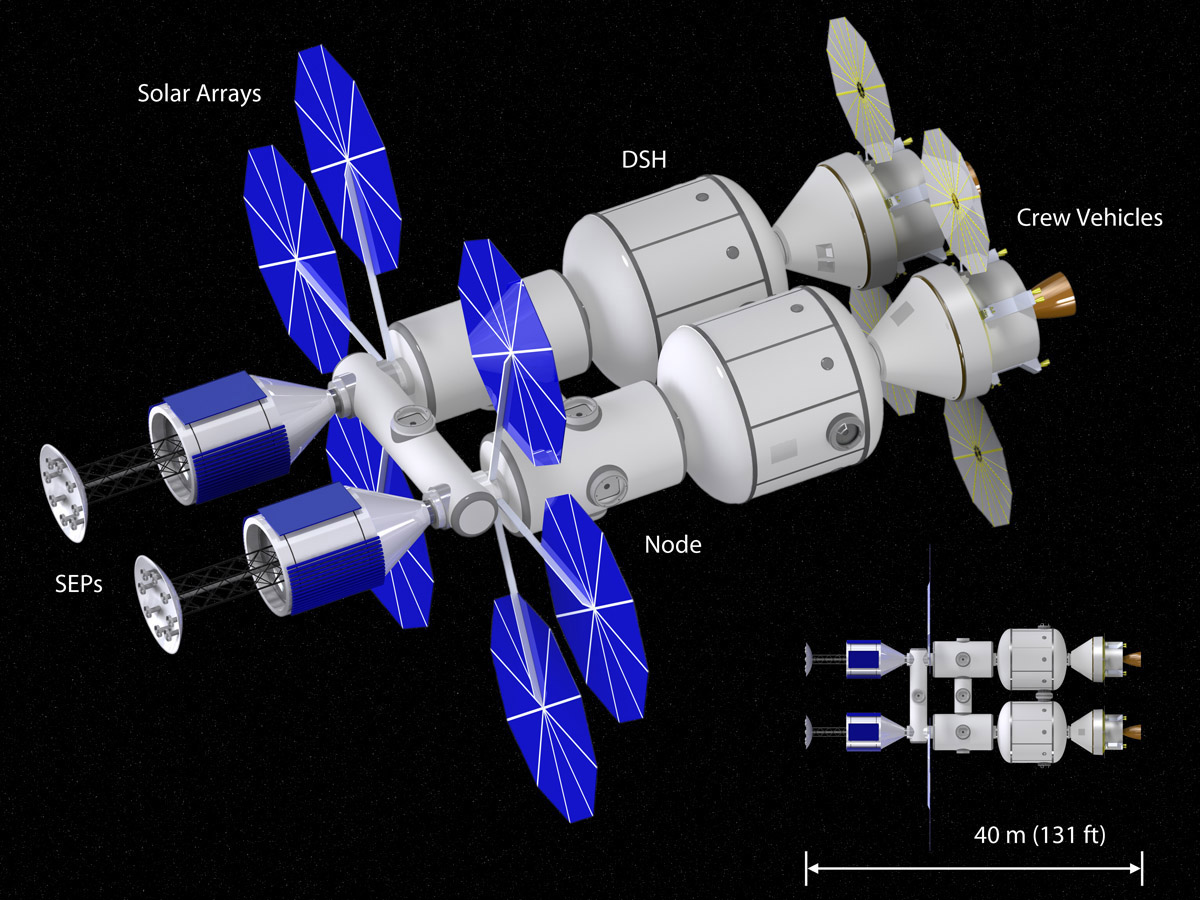
“There was a father that came up to me with his eight-year-old son at a book signing, and he said ‘You know my son wants to go to Mars.’ Rather than asking the boy the difficult question of how long do you think its going to take to get there, I said ‘Now when you get to Mars how long do you want to stay?’ It puzzled him a little bit, and he looked up at the ceiling, and then he said ‘Oh, a couple of days.’ I thought that was an interesting answer, and an understandable answer considering what eight year olds are generally aware of. It’s very instructive to look up at the Moon and ask the question, ‘Now where’s the Sun? And which way is north?’ and watch how kids deal with that.
“I am quite excited about the Mars exploration sequence that I have put forth and I feel that this is a very opportune time that should be encouraged by all STEM students.”
Understanding and learning from the past is necessary toward moving forward and avoiding making the same mistakes over and over again. With that in mind Aldrin is has formed two organizations he hopes can influence the direction of the nation’s space exploration programs. The first is a foundation called USS Enterprise which stands for United Strategic Space Enterprise. The foundation will examine space policies from the very beginning of the space program all the way through the present.
“Once we get it up and running, my son will carry through because it is going to be a significant undertaking. The things that are hampering our space program right now, maybe we can change that by knowing what we did right and what we did wrong, and look to the root cause. If it is our system of government then we better think carefully about where it’s taking us in high technology, high reliability, human protection ventures.”
The second organization is the Unified Space Vision Institute (USVI). It will be focusing on the future of space exploration.
“It’s a very small number of worker bees right now. I wish I had started it a little sooner, but we get smarter and smarter (as people) as the clock goes round.”
Coming back from the Moon was not something anyone could have adequately prepared for. After quarantine, debriefing and a worldwide tour celebrating the mission, each of the three astronauts dealt with the weight of their accomplishment in different manners.
“It’s not necessarily a universal significance change. In my case there were, not mitigating, but outside influences. That is why I titled my first autobiography ‘Return to Earth’ instead of ‘Journey to the Moon’ or ‘The Moon and Back.’ That is because the return proved to be the most difficult part of the mission. There are a couple of autobiographies that cover my inherited depression and alcoholism. You don’t arrest either one, but I have 35 years of sobriety and my mental state most of the time is positive.”
While Aldrin admits he can’t carry a tune, and isn’t likely to ever be seen climbing a mountain, he is still a man who has travelled the Earth and beyond in the name of adventure. He has been an avid scuba diver for more than 55 years and has made recreational dives at locations all around the world. At present he’s been in a ‘holding pattern’ for five years waiting to reach the South Pole via a hovercraft. Definitely not your typical summer vacation destination.
“I’ve been to the North Pole on a Russian nuclear icebreaker. That was quite enlightening. Even more so years before that in a French yellow submarine for three people – two spoke French and one did not, that’s me – we went down for a total of 11 hours visiting the Titanic. I was given a baseball cap that says ‘Bottom Gun.’ Not ‘Top Gun.’ It was given to me because Bob Ballard felt that anyone that had been down to see the Titanic – even an Air Force guy – should have a cap that says ‘Bottom Gun.’
“That’s some of the versatility of my inquisitiveness about exploration to the fringes.”
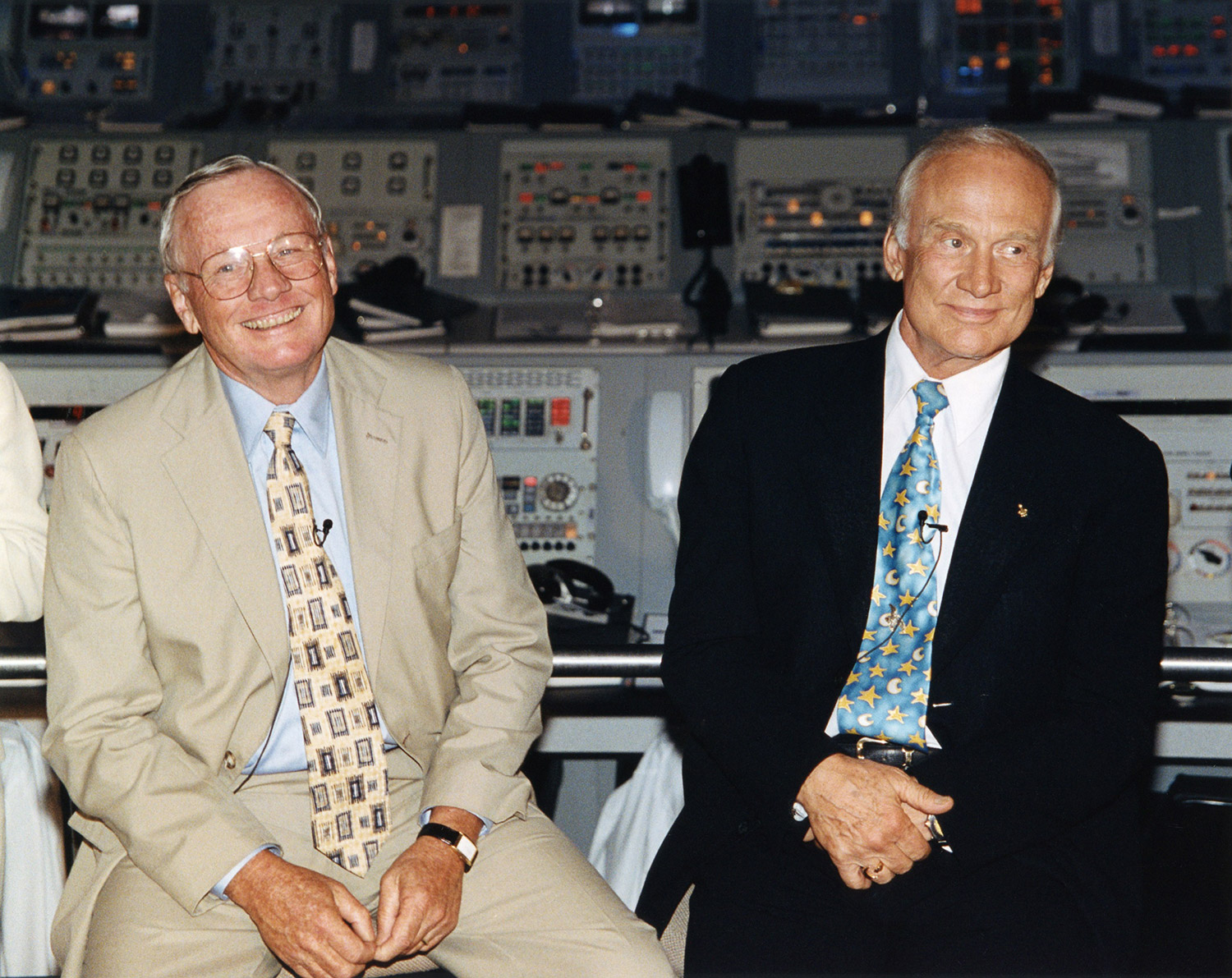
With more than 40 years having passed since humanity last stepped on the Moon, it is not a stretch to say that a majority of the world’s population has zero recollection of that era. While historians have dissected the details in numerous books over the years, the simple fact remains that only two dozen people truly know what the experience of leaving low earth orbit is like. Getting to that point was not just a shot in the dark. Even though it took less than a decade to accomplish, NASA took a very calculated approach to reach the Moon.
“The Moon landings were prepared for in a gradual way by the three programs of American human spaceflight – Mercury, Gemini and Apollo. I’ve not really seen this written down, but I’ve heard that the reason that 20 Apollo missions were prepared and built to be carried out, was that people felt assured that we would at least land successfully on ONE of those 20 missions. There was a strong belief that President Kennedy’s commitment would be carried out.
“In late 1967 and early ’68 the first landing on the Moon was going to be in mid October ’69 to be accomplished by LEM 6. This was because all the preceding lunar modules were too heavy to land. The crew rotations would have kept going pretty close to what they actually did. The first landing would have been achieved by Apollo 12 in October of ’69 and not Apollo 11 in July ’69. Obviously something happened to LEM 5 that made it a qualified lander. It was reduced in weight, but we still sort of jokingly blamed the program manager, who I’ve gotten to know very well, that he’s the guy that caused us to run low on fuel. No, we didn’t have less fuel. We were heavier than most later spacecraft. Sometimes things don’t work the way you expect them too.”
Of course before the Apollo spacecraft could be hurled toward the Moon by the mighty Saturn V rocket, there were a number of problems that had to be solved, and procedures to test. The Mercury and Gemini programs were the test beds that directly led into the Apollo program.
“The Mercury spacecraft could not maneuver fore and aft, left and right, and up and down. The only thing that allowed it to reenter were that retrorockets slowed it up so it reentered the atmosphere. Now the Gemini system with two people in it, could translate significantly in all those directions and rotate also. It was much more versatile, and it allowed a growth period between Mercury and the complex Apollo missions.
“The four essential objectives of the Gemini program were computer controlled reentry to an accurate landing, long duration spaceflight of 14 days, spacewalking outside the spacecraft, and rendezvous and docking. It was those four objectives which equipped us to move to Apollo but there were two ways of getting to the Moon.
“One was by Earth orbit rendezvous, requiring two Saturn Vs, where a propulsion stage to depart the Earth would first be placed in orbit, followed by a quite large spacecraft containing the crew that would do everything else. Instead of lunar orbit rendezvous and segmenting the mission into different spacecraft which required only one Saturn V and was the one that was chosen. That was unquestionably the most successful, the most decisive, the most telling decision made I think throughout the entire U.S. human spaceflight program up to that point.
“We certainly did need to fly the spacecraft in Apollo for a reasonably long time – 11 days with a veteran, Wally Schirra (Apollo 7). Then there were indications that the Russians might fly one cosmonaut around the Moon and back in the Zond spacecraft. Our lander, LEM 3, was delayed so we shifted things around and sent the second crew (Apollo 8) on a Saturn V rocket after only two previous unmanned tests. We sent them not just around the Moon, but to enter orbit around the Moon. Then the testing of the lander in Earth orbit, a dress rehearsal in lunar orbit, and the landing from lunar orbit, all naturally followed.
“I think the crews could see that progression coming and it would keep coming until we landed, or ran out of rockets. The people who were in the astronaut program were either resigned to flying the command module and maybe later landing, or being one of the two guys who might land on the Moon. So we adjusted to that future in an attempt to adjust to the training leading up to the moment of liftoff. We had a lot of time to think about that and watch other people go through that, but to explain to someone who hasn’t experienced any of that, what we ‘felt like,’ is like an alien explaining what his flying saucer is like.”
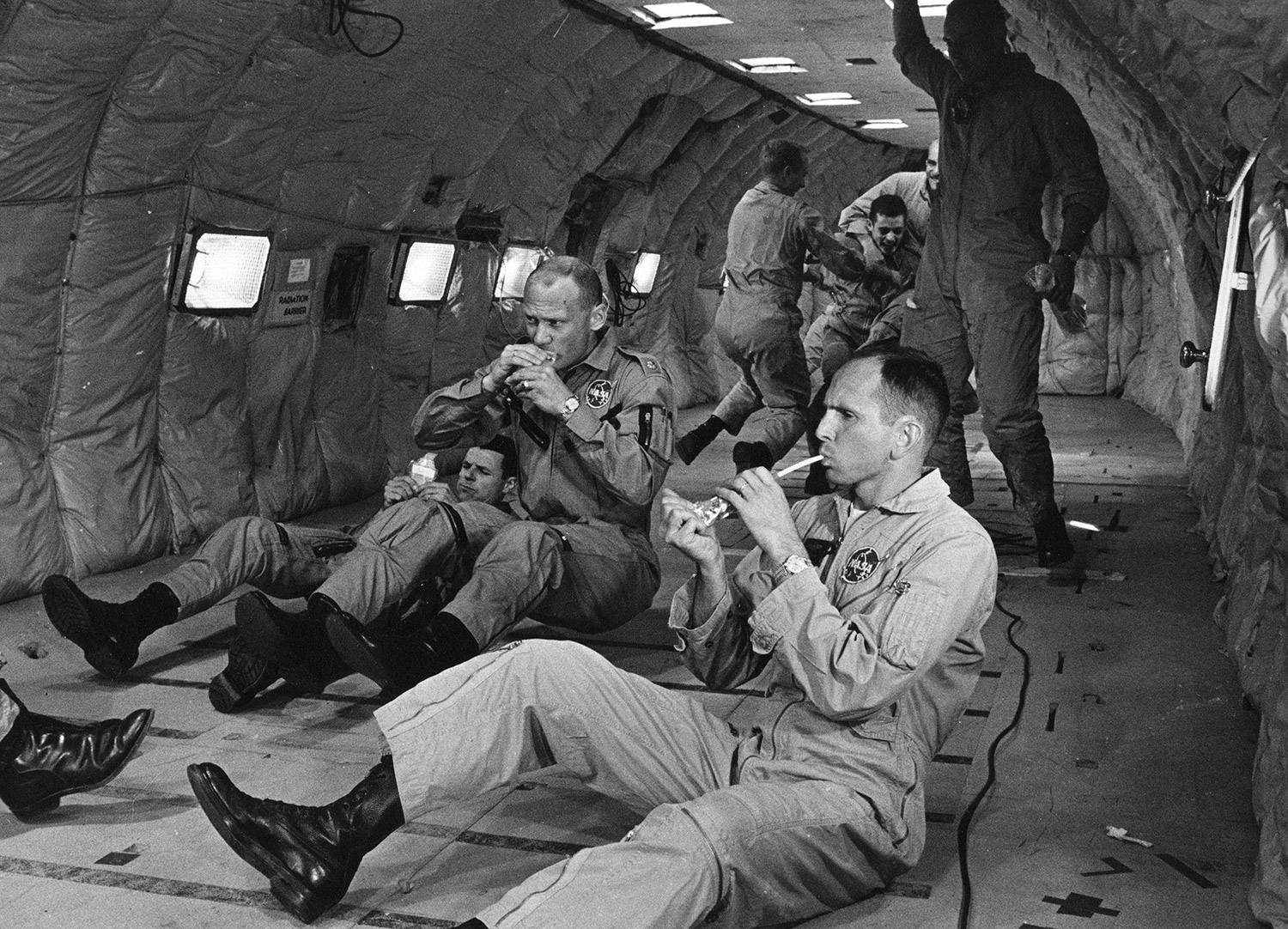
Mentioning UFOs is something that has gotten Aldrin in a bit of hot water in the past. While flying to the Moon, the crew of Apollo 11 noticed sunlight reflecting off something in the distance. While it has never been 100% confirmed, the trio has always believed what they saw was a separation panel from the third stage of the Saturn V rocket.
“I felt the debriefing that we did from the quarantine facility to the NASA executives was not privileged information, but the significant parts of it was disseminated in some ways. We certainly explained a light out the window traveling slowly with respect to the inertial background, which we used to say its somewhere not quite as far away as the stars. I’d seen graphs of the panels that are enclosing the lunar module that are set in four different directions when we separate the command module, turn around and dock with the lunar module, then disconnect the lunar module from the rocket. We knew all that, and that is why instead of blurting out ‘Hey Houston, there’s a light that’s towing along with us toward the Moon,’ that would not have been too smart a transmission. So instead we ask a reassuring coverup question. We said ‘Hey can you tell us how far away the S-IVB is now?’ We had watched it lit the engine and move away at an accelerating speed, but the people at Houston were probably puzzled by the question. When they came back 10 minutes later and said it’s about six thousand miles away, we figured that either it was going mighty fast still, or that wasn’t what we were looking at. We didn’t really get great further satisfaction by looking through the telescope or looking through the 28 power sextant.
“It certainly wasn’t rotating like a saucer. They was no reason to suspect, other than an unusual sun reflected angle, that it was one of those panels. Now I discovered gradually in talking to people that they had never heard that debriefing.
“I had a long interview with the BBC and I decided to explain it to the best of my knowledge, which always confuses somebody, especially when they want to be confused. So the UFO people back in the States were very angry with me for not giving them the scoop.
“Charles Berlitz wrote his book and established his credibility in the first couple of pages by listing the different spaceflights that had reported observing unusual observations, including Neil and I on the Moon talking about some green creatures on the other side of a crater. That was heard by Charles Berlitz I guess over Anglia TV, so he can blame it on Anglia TV instead of himself. I sued him and that scared him. It cost me a little bit of money but it was worth it. And so was using Bart Sibrel’s chin as the target for my right fist (after harassing Aldrin at a hotel and demanding he prove he had walked on the Moon). That cost me a little bit too, but it gave me a lot of prestige.”
Aldrin has found himself asked all sorts of questions while out and about during the years. And the questions aren’t always about the Apollo 11 mission.
“I was coming back from a trip that landed at LAX two years ago and as I was walking out there were three guys – one with the camera held low and aimed directly at me – and he said ‘Hey Buzz Aldrin, what do you think about that guy who set a record and jumped out of a balloon and he came back to Earth? What do you think about Felix Baumgartner?’ I had just enough time to get my mind working as I was walking, and I said ‘Well, that sure was a giant leap for Red Bull!’ I don’t think there is going to be second jump. Who’s going to do that?”
Only 12 people have walked on the Moon. Another dozen have travelled to the Moon but stayed in lunar orbit (or in the case of Apollo 13 taken a slingshot around the Moon). It is a very small contingent and encountering similar groups of people is not a common thing, but it does happen occasionally.
“I had the opportunity at the Memorial Day parade this year, to meet four survivors of the Doolittle Raid. My father was a contemporary of Jimmy Doolittle, born in the same year. But instead of racing around the pylons, he would be a judge at the Cleveland air races.
“I went up to the copilot who seemed to be the senior officer – I don’t know if there was another B-25 commander in the crew that survived. but Colonel Dick Cole was the 98-year-old copilot. I said ‘I’ve got two things i want to talk to you about.’ One is the same thing that I told Jimmy is that I used to visit his office frequently after my father died. I said ‘Jimmy do you know that our rocket was taller than your takeoff roll on the carrier?’ I decided that I would tell Dick Cole the same thing, and I think it finally sunk in what I was talking about. And then I said ‘Now there’s another thing that whenever I am introduced as a speaker or in the audience, or at an occasion, it is almost unanimous – very very rare is there ever an exception – that I’m introduced as the second man on the moon.’ And I said to Dick, ‘Now we share that in common because you’re going to be known as the second man on the first plane.’ I don’t think he was too worried about that.
“It is one of those undone things that I’m going to get together with one or more of the four of them and have them consider what their reunions have meant to them for 72 years.
“I’m always interested in people recognizing that it was not just 12 Americans who landed and walked on the Moon, but it’s 24 who reached the Moon. That was enabled by four learning missions and one emergency. I think that 24 is a much better number for students to be aware of, but I have given up on the State Department recognizing all 24 living or deceased as lunar ambassadors. All American and foreign space people should be aware and reminded of what’s gone before them.”
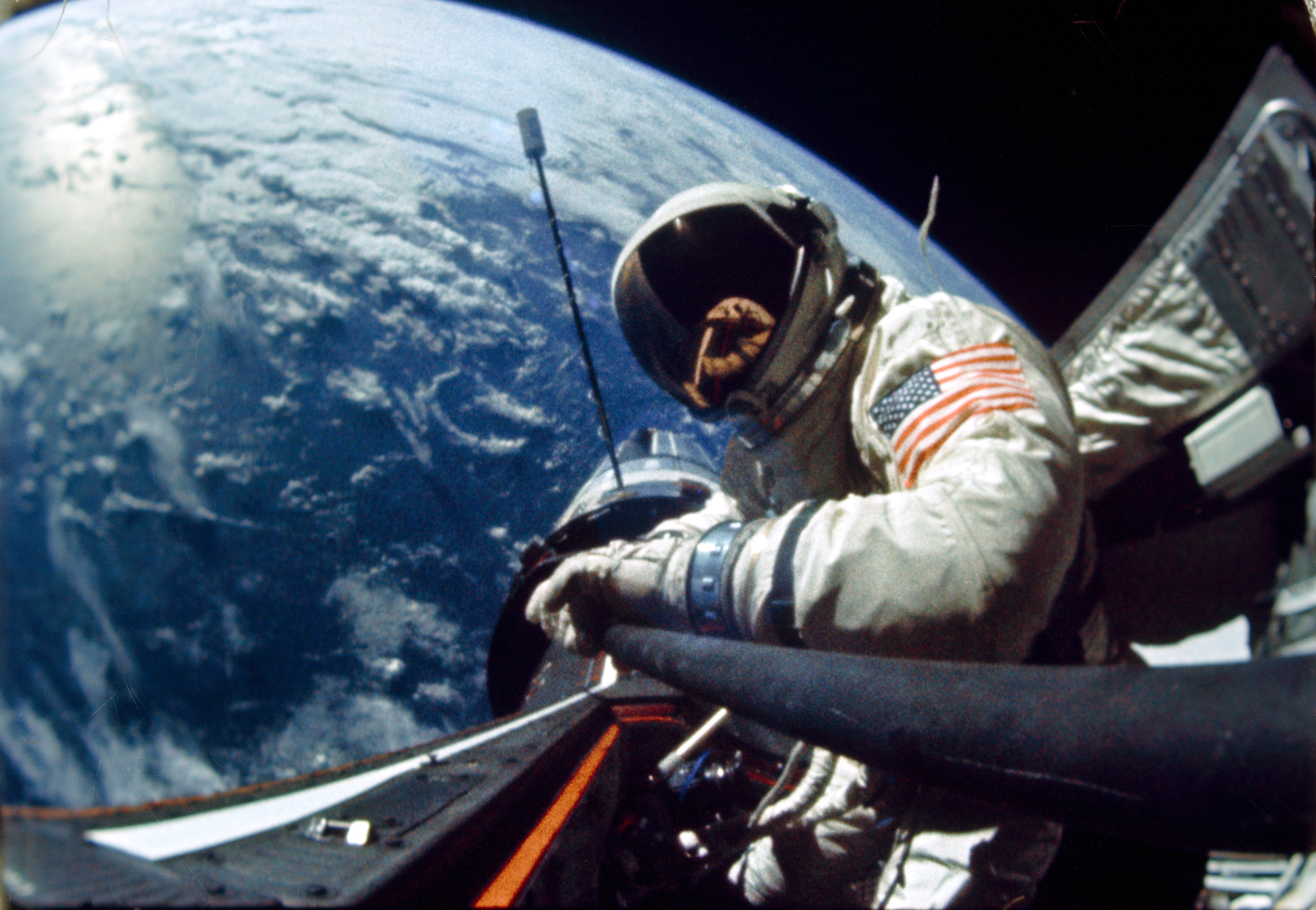
 Dr. Aldrin: The author
Dr. Aldrin: The author
Buzz Aldrin has written eight books, including last year’s “Mission to Mars,” “Magnificient Desolation,” and the children’s book, “Look to the Stars.”
All three books may be purchased at www.amazon.com and in bookstores.

